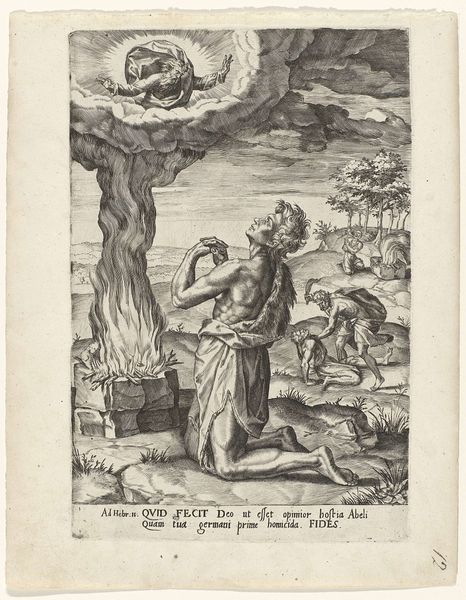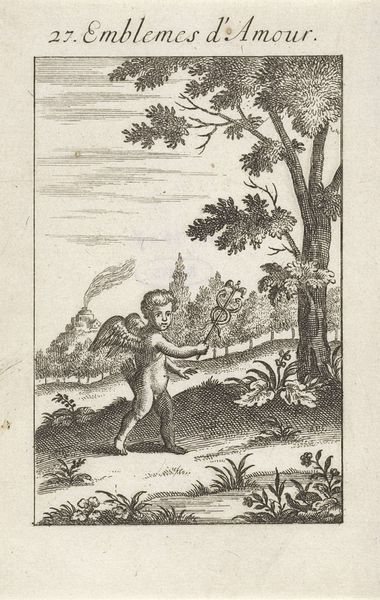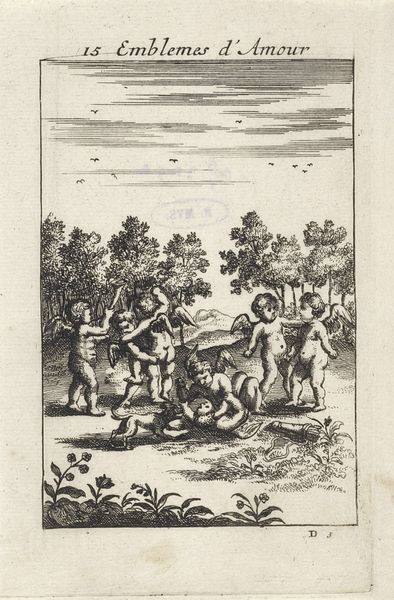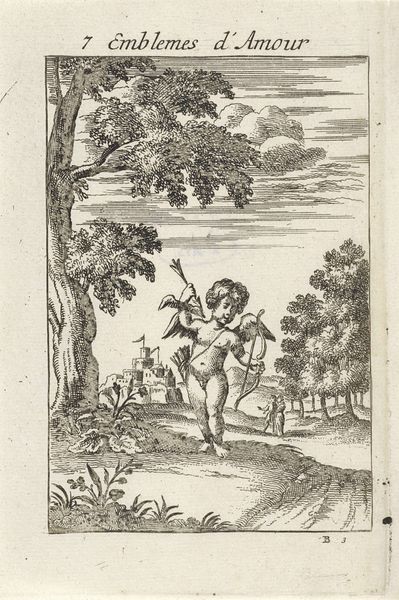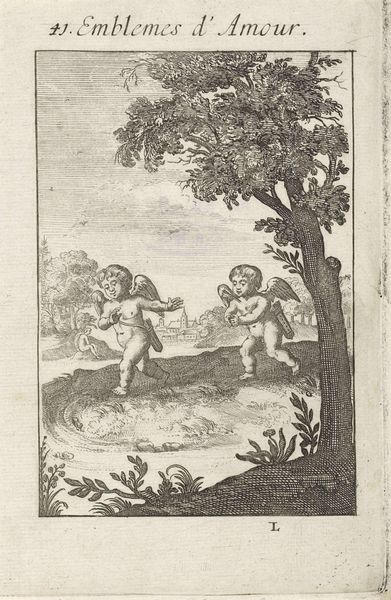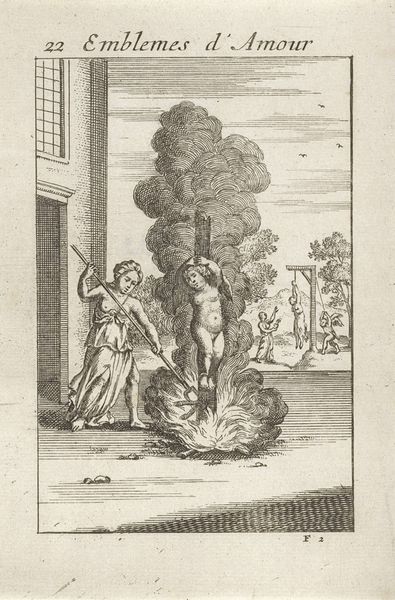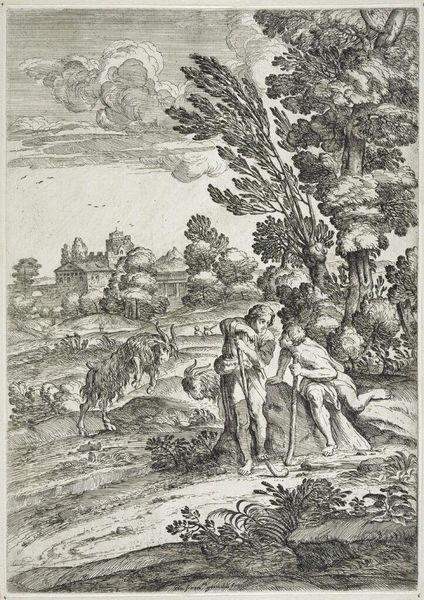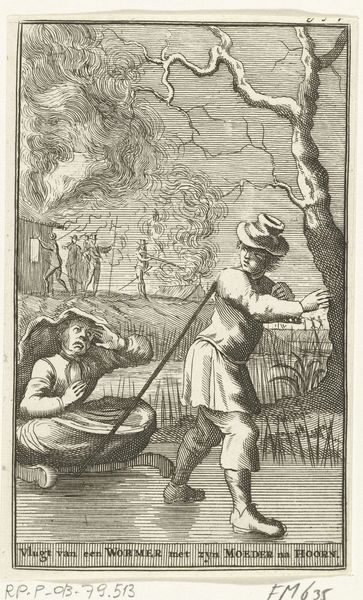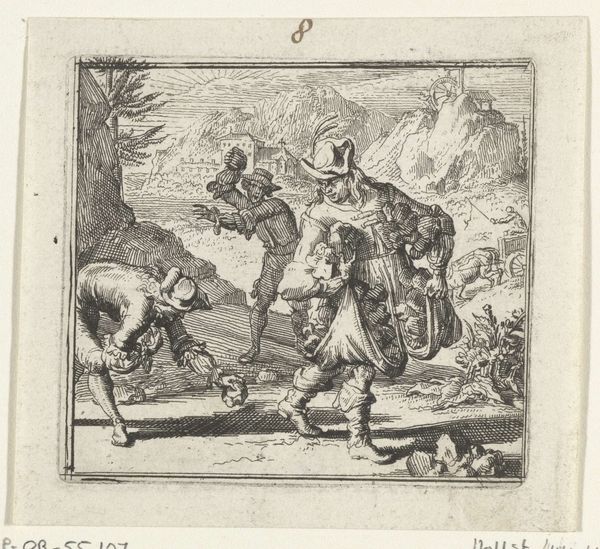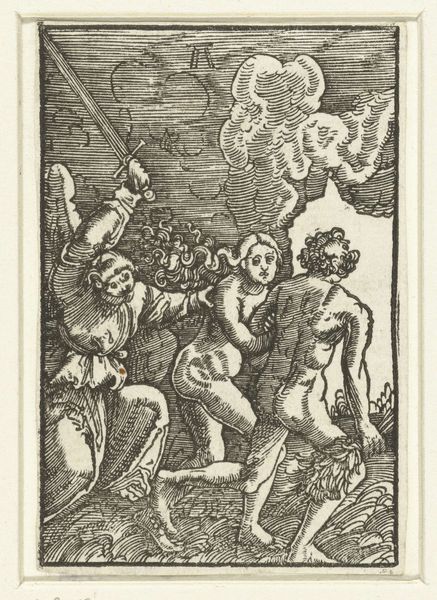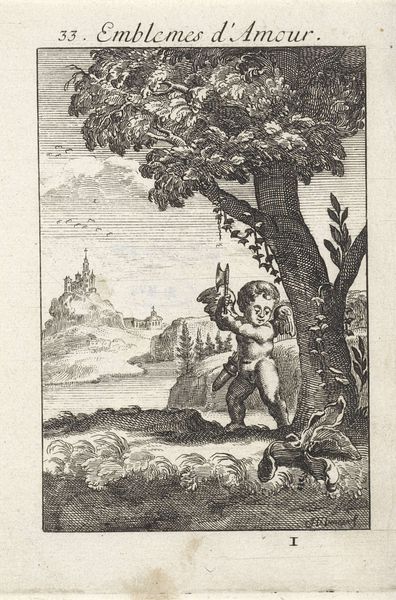
engraving
#
baroque
#
pen sketch
#
landscape
#
figuration
#
genre-painting
#
engraving
Dimensions: height 145 mm, width 95 mm
Copyright: Rijks Museum: Open Domain
Curator: I’m drawn to the way light and shadow interplay across the composition. The smoke emanating from one of the torches seems to billow almost organically despite being a pen sketch. Editor: This is “Two Putti with Torches,” an engraving made around 1686 by Jan van Vianen, now held here at the Rijksmuseum. Immediately, I am struck by the artist's adeptness in crafting the illusion of depth using exclusively line work. Curator: The putti, or cherubic figures, clearly dominate the scene. One raises his torch high, the flame resembling a burst of passion, while the other seems to carry a burnt-out torch. It could suggest the ephemeral nature of love's initial spark. Editor: And think about the means by which that flame, that spark, has been captured! An engraving requires a painstaking process, a conscious labor, to translate such ephemeral imagery through meticulous etching. We need to ask ourselves where that labor comes from? Who benefitted from that? And what kind of societal structure makes art possible. Curator: It makes me consider the broader cultural context—the Baroque period, steeped in allegorical representation. These aren’t just children with fire, but symbols freighted with meanings about love, mortality, and perhaps even spiritual illumination. Editor: But it’s also easy to overlook the sheer skill of Van Vianen in rendering the texture of skin and fabric, creating different surfaces that mimic what the Baroque stood for. What was he charging for this engraving and how much were similar workers charged to do manual labor? This provides greater insight into 17th century Dutch material conditions. Curator: True, but it also brings a psychological dimension into play. Are these figures harbingers of comfort or discomfort, or both? Editor: For me, it highlights the dichotomy inherent to the entire artistic endeavor—the tension between physical exertion, market and commercial considerations, the tangible object, and the pursuit of these abstract themes and artistic inspiration. It’s a nice example of what these kinds of tensions do for an artwork and what it reveals in society and in the studio. Curator: I find myself considering how it encapsulates this ongoing narrative. Editor: Indeed, art making has always existed in a world of material demands.
Comments
No comments
Be the first to comment and join the conversation on the ultimate creative platform.
